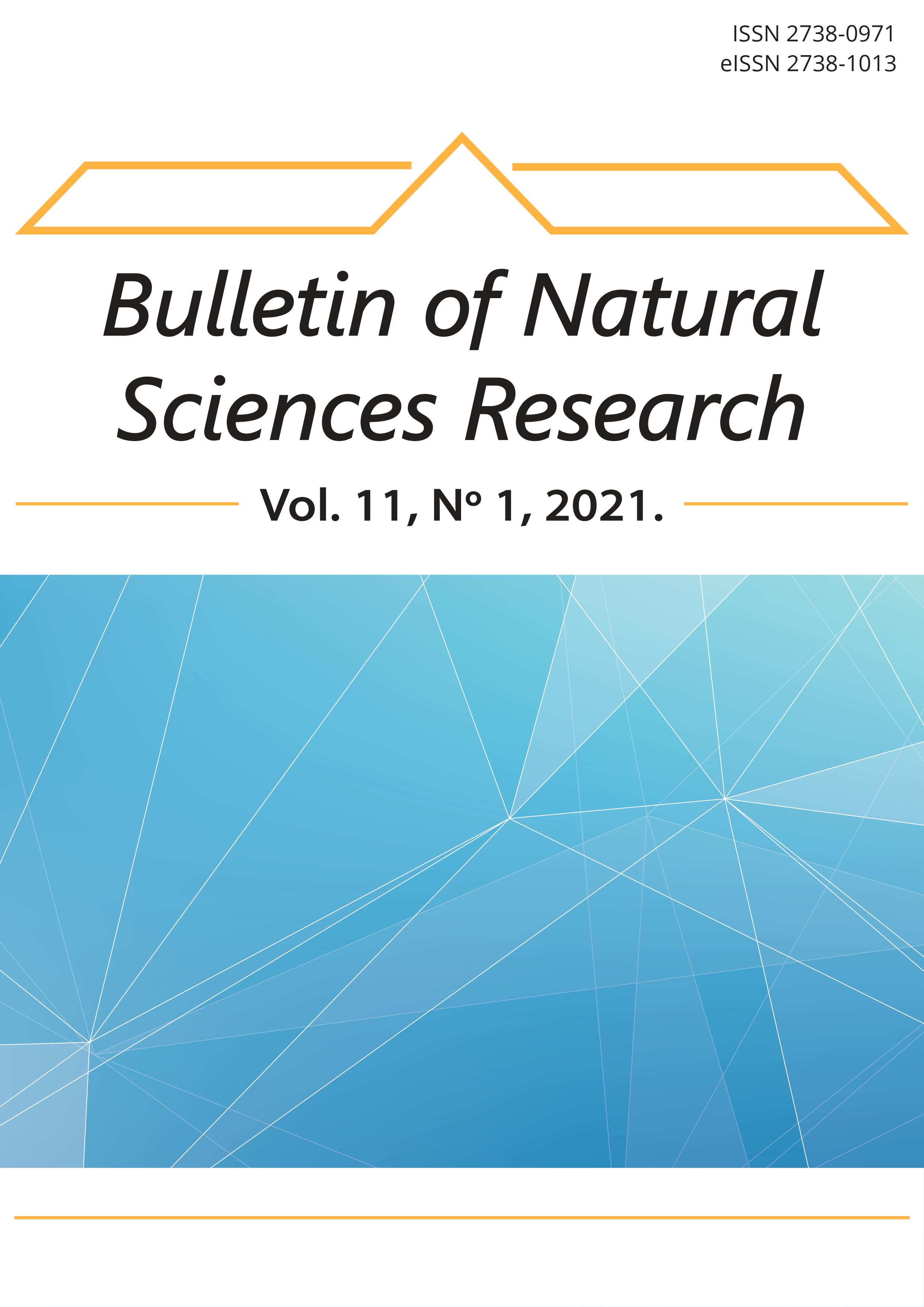PHARMACEUTICALS AND ENDOCRINE-DISRUPTING COMPOUNDS: ACCUMULATION IN THE TISSUE OF SKADAR LAKE FISH
Abstract
Determining the presence of pharmaceuticals and endocrine-disrupting compounds in fish tissues has been carried out in Montenegro for the first time in Moraca river and Skadar lake. Skadar lake, Montenegro, is the largest of the Balkan lakes and has a surface area which fluctuates seasonally from approximately 370 to 600 km2. During the spring time of 2016, in the time of high water levels of the lake, fish were fetched in triplets and identified. Determining the presence of pharmaceuticals and endocrine-disrupting compounds in fish tissues has been carried out in Montenegro for the first time. Their muscle tissue was separated, grinded, feezed, and then lyophilized. Prepared samples were analyzed with liquid chromatography coupled to tandem mass spectrometry to determine the presence of pharmaceuticals and endocrine-disrupting compounds. Obtained results are under the border of detection, out of 38 tested distributes, only the tissue of Alburnus scoranza showed the presence of triclosan.
References
Bianco, P. G. & Kottelat, M. 2005. Scardiniusknezevici, a new species of rudd from Lake Skadar, Montenegro (Teleostei: Cyprinidae). Ichtyol. Explor. Freshwat.
Bonaparte, C. L. 1841. Aspius alburnus (aspius alborella) – In Iconografiadella fauna italica Pesci, Salvucci.
Beeton, A. M. & Karaman, G. 1981.The biota and limnology of Lake Skadar. Titograd GRO Prosveta, Beograd.
Brooks, B. W. 2005. Determination of select antidepressants in fish from an effluent-dominated stream. Environ Toxicol Chem.
Deighton, C. G. & Ternes, T. A. 1999. Pharmaceuticals and personal care products in the environment: Agents of subtle change? Environmental Health Perspectives.
Capdevielle, M, Egmond, R. V., Whelan, M., Versteeg, D., Hofmann-Kamensky, M., Inauen,J., Cunningham, V. & Voltering, D. 2008. Consideration of exposure and species sensitivity of triclosan in the freshwater environment. Integr Environ Assess Manag.
Chalew, T. E. A. & Halden, R. U. 2009. Environmental exposure of aquatic and terrestrial biota to triclosan and triclocarban. Journal of the American Water Resources Association (451).
Drecun, D. & Miranovic, M. 1962. Ulov ribe na Skadarskom jezeru 1947-1960 godine. Hydrobiologia Montenegrina.
Gros, M., Petrovic, M. & Barcelo, D. 2009. Tracing Pharmaceutical Residues of Different Therapeutic Classes in Environmental Waters by Using Liquid Chromatography/Quadrupole Linear Ion Trap Mass Spectrometry and Automated Library Searching. Analytical Chemistry.
Govindaraj, S., Karthik, R., Krishna, K., Selvaraj, S. S. & Babu, R. R. 2014. Triclosan in Fresh Water Fish Gibelion Catla from the Kaveri River, India, and Its Consumption Risk Assessment. Environmental Forensics Volume.
Karaman, S. 1924. Pisces Macedoniae. Split.
Kastratovic, V., Krivokapic, S., Bigovic, M., Djurovic, D. & Blagojevic, N. 2014. Bioaccumulation and translocation of heavy metals by Ceratophyllum demersum from Skadar Lake, Montenegro. J Serb Chem Soc.
Linnaeus, C. 1758. Systemanaturae per regna trianaturae, secundum classes, ordines, genera, species, cum characteribus, differentiis, synonymis, locis. Tomus I.
Fent, K., Weston, A. A. & Caminada, D. 2006. Ecotoxicology of human pharmaceuticals. Aquatic Toxicology.
Huerta, B., Jakimska, A., Gros, M., Rodriguez-Mozaz, S. & Barcelo, D. 2013. Analysis of multi-class pharmaceuticals in fish tissues by ultra-high-performance liquid chromatography tandem mass spectrometry. Journal of Chromatography A.
Huerta, B., Rodriguez-Mozaz, S. & Barcelo, D. 2012. Pharmaceuticals in biota in the aquatic environment: analytical methods and environmental implications. Anal BioanalChem.
Ohe, T., Hirobe, M. & Mashino, T. 2000. Novel metabolic pathway of estrone and 17b-estradiol catalyzed by cytochrome P-450. Drug Metab Dispos.
Perovic, A., Perovic, S., Erdinger, L. & Hollert, H. 2012. Assessment of genotoxic potential of the Lake Skadar sediments extracts using the comet assay with fish cell line RTL-W1 and Ames test. Arch BiolSci.
Petrovic, D., Jancic, D., Furdek, M., Mikac, N. & Krivokapic, S. 2016. Aquatic plant Trapanatans L. as bioindicator of trace metal contamination in a freshwater Lake (Skadar Lake, Montenegro).Acta Bot Croat.
Rastall, A. C., Neziri, A., Vukovic, Z., Jung, C., Mijovic, S., Hollert, H., Nikcevic, S. & Erdinger, L. 2004. The identification of readily bioavailable pollutions in Lake Shkodra/Skadar using Semipermeable membrane devices (SPMDs), bioassays and chemical analysis. Environ SciPollut Res Skadarsko jezero (Site 3YU003) In: A directory of wetlands of International importance 2002. The Ramsar Convention Bureau. Gland, Switzerland.
Rakocevic-Nedovic, J. & Hollert, H. 2005. Phytoplankton community and chlorophyll a as trophic state indices of Lake Skadar (Montenegro, Balkan). Environ SciPollut Res.
Stesevic, D., Feiler, U., Sundic, D., Mijovic, S., Erdinger, L., Seiler, T. B., Heininger, P. & Hollert, H. 2007. Application of a new sediment contact test with Myriophyllum aquaticum and of the aquatic Lemna test to assess the sediment quality of Lake Skadar.J Soils Sediments.
Sutton, R., Mason, S. A., Stanek, S. K., Willis-Norton, E., Wren, I. F. & Box, C. 2016. Microplastic contamination in the San Francisco Bay, California, USA.Mar Pollut Bull.
Tatarazako, N., Ishibashi, H., Teshima, K., Kishi, K. & Arizono, K. 2004. Effects of triclosan on various aquatic organisms. Environ Sci.
Ternes, T. A. 1998. Occurrence of drugs in German sewage treatment plants and rivers. Water Research.
Ximei, L., Xiangping, N., Guangguo, Y., Taicheng, A. & Kaibing, L. 2013. Assessment of toxic effects of triclosan on the swordtail fish (Xiphophorus helleri) by a multi-biomarker approach.Chemosphere.
Zupancic, P., Maric, D., Naseka, A. M. & Bogutskaya, N. G. 2010. Squalius platyceps, a new species of fish (Actinopterygii: Cyprinidae) from the Skadar Lake basin. Zoosystematica Rossica.
Zwiener, C. & Frimmel, F. 2004. LC-MS analysis in the aquatic environment and in water treatment - a critical review - Part I: Instrumentation and general aspects of analysis and detection. Analytical and Bioanalytical Chemistry.
Vemic, M., Rousseau, D., Laing, G. D. & Lens, P. 2014. Distribution and fate of metals in the Montenegrin part of Lake Skadar. Int J Sediment Res.
Authors retain copyright and grant the journal right of first publication with the work simultaneously licensed under a Creative Commons Attribution License that allows others to share the work with an acknowledgement of the work's authorship and initial publication in this journal.

